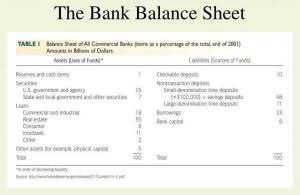
Expenses(EX/EXP) are costs incurred during business operations, subtracted from revenues to determine net income. ‘Adjustment’ or ‘ADJ,’ in accounting terms, refers to an entry made in the books of accounts related to the correction or alteration of revenues and expenses. P&L (Profit and loss) – One of the financial statement abbreviations, this one shows how much money oe in accounting a company has earned (profit) or lost (loss) during a specific period. Note that there is a difference between accounting profit and economic profit.

Long-Term Liabilities (LTL)

It will become part of depreciation expense only after it is placed into service. In accounting, LIFO expenses the costs of the most recent products you’ve purchased. Some businesses prefer last-in, first-out because it helps manage inventory costs and reduces taxable income during inflation. This metric tells you how much your business spent to produce products. It tallies the costs of labor and materials to help you calculate gross profit and better understand overall productivity. It’s a simple metric that looks at all unchanging costs in your business.
- An increase in a liability or equity account, or a decrease in an asset or cost account, is a credit.
- As a business owner, you’ll make at least one annual payment to the IRS, although some businesses are required to pay quarterly or monthly taxes.
- It is computed by taking Revenue and deducting all Expenses, including COGS, Overhead, Depreciation, and Taxes, for a particular period.
- This helps to protect the person who wrote the invoice in the event that they unintentionally make a mistake when adding up the final invoice amount or any other aspect of the invoice.
- COB (Close of business) – This accounting abbreviations entry refers to the end of the business day.
- Cash Management (CM) signifies the corporate finance function managing a firm’s liquidity(cash balance and other liquid resources)&financial strategy.
CWC – Certified Working Capital

The accounting equation also indicates that the company’s creditors had a claim of Oil And Gas Accounting $7,120 and the owner had a residual claim of $10,080. The accounting equation plays a significant role as the foundation of the double-entry bookkeeping system. It is used to transfer totals from books of prime entry into the nominal ledger.

Income and retained earnings
For the past 52 years, Harold Averkamp (CPA, MBA) hasworked as an accounting supervisor, manager, consultant, university instructor, and innovator in teaching accounting online. Our examples assume that the accrual basis of accounting is being followed. Since the statement is mathematically correct, we are confident that the net income was $64,000. Our examples assume that the accrual basis of accounting is being used. For the past 52 years, Harold Averkamp (CPA, MBA) has worked as an accounting supervisor, manager, consultant, university instructor, and innovator in teaching accounting online.
- Since the loss is outside of the main activity of a business, it is reported as a nonoperating or other loss.
- In reality, most companies are worth several times their reported assets; Google’s market cap is over 10x the book value (but read more about stocks to see why market cap is not quite right).
- A bill issued by a seller of merchandise or by the provider of services.
- Current assets are items that are completely consumed, sold, or converted into cash in 12 months or less.
- You should consider our materials to be an introduction to selected accounting and bookkeeping topics (with complexities likely omitted).
- Fees earned from providing services and the amounts of merchandise sold.
Operating income, or income from operations, is an essential financial metric used to measure a company’s profitability derived exclusively from its core business operations. It represents a company’s earnings before non-operating gains or losses and taxes (EBIT) but after deducting operating expenses such as cost of goods sold (COGS) and other general expenses. http://mgchoksi.com/mastering-bookkeeping-for-painters-the-ultimate/ In this section, we address some frequently asked questions about operating income and its significance in financial analysis.